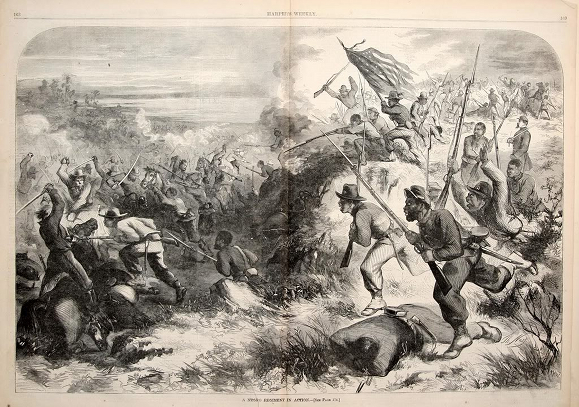Harper’s Weekly was the most widely read magazine of the Civil War. It both shaped and reflected public opinion, as can be seen by the editorial “double-dealing” in the paper's treatment of African-American soldiers. Some entrenched racial stereotypes are indulged, such as the description of blacks as “docile” or their portrayal as animal-like (“Negroes as Soldiers” column), while simultaneously the same stereotypes are exposed as false: such as in the descriptions and illustrations of black soldiers’ conduct in combat (the cover and double-page image, and the “Negroes as Soldiers” column), or when the picture of a neat, dignified-looking African-American soldier (“Union Jim”/”Jim Williams”) is shown on the same page as a scraggly, duty-shirking, con-artist white soldier. (“A Straggler”).
The articles and illustrations shown here all appeared in issues of Harper’s Weekly from March 1863 (held in the Littlejohn Collection), when, after the Emancipation Proclamation of 1 January 1863, the Union was just beginning to (legally) field and pay African-American combat units — though the American "Colored Troops" were paid three dollars less per month.
|









